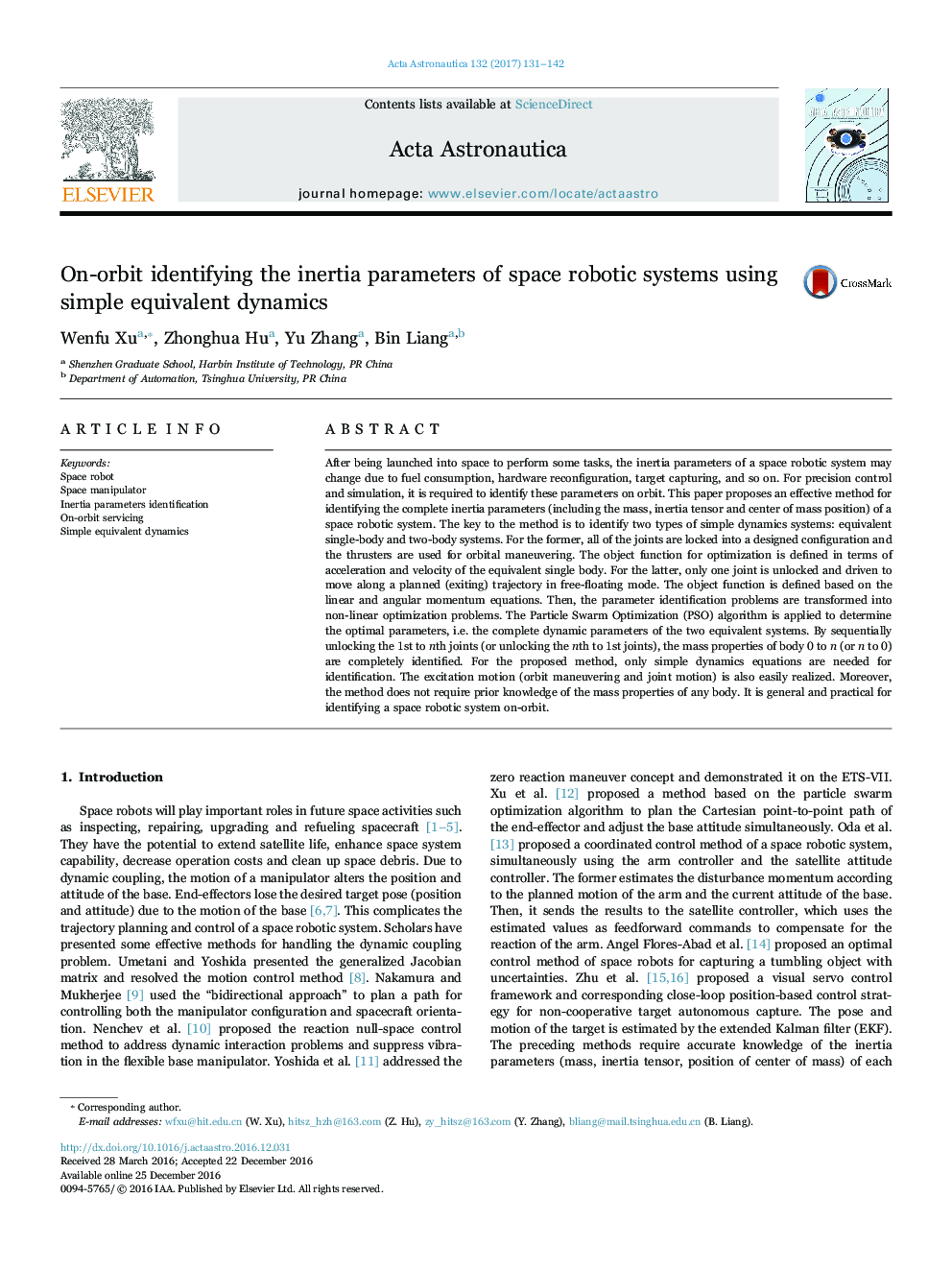| Article ID | Journal | Published Year | Pages | File Type |
|---|---|---|---|---|
| 5472562 | Acta Astronautica | 2017 | 12 Pages |
Abstract
After being launched into space to perform some tasks, the inertia parameters of a space robotic system may change due to fuel consumption, hardware reconfiguration, target capturing, and so on. For precision control and simulation, it is required to identify these parameters on orbit. This paper proposes an effective method for identifying the complete inertia parameters (including the mass, inertia tensor and center of mass position) of a space robotic system. The key to the method is to identify two types of simple dynamics systems: equivalent single-body and two-body systems. For the former, all of the joints are locked into a designed configuration and the thrusters are used for orbital maneuvering. The object function for optimization is defined in terms of acceleration and velocity of the equivalent single body. For the latter, only one joint is unlocked and driven to move along a planned (exiting) trajectory in free-floating mode. The object function is defined based on the linear and angular momentum equations. Then, the parameter identification problems are transformed into non-linear optimization problems. The Particle Swarm Optimization (PSO) algorithm is applied to determine the optimal parameters, i.e. the complete dynamic parameters of the two equivalent systems. By sequentially unlocking the 1st to nth joints (or unlocking the nth to 1st joints), the mass properties of body 0 to n (or n to 0) are completely identified. For the proposed method, only simple dynamics equations are needed for identification. The excitation motion (orbit maneuvering and joint motion) is also easily realized. Moreover, the method does not require prior knowledge of the mass properties of any body. It is general and practical for identifying a space robotic system on-orbit.
Related Topics
Physical Sciences and Engineering
Engineering
Aerospace Engineering
Authors
Wenfu Xu, Zhonghua Hu, Yu Zhang, Bin Liang,
